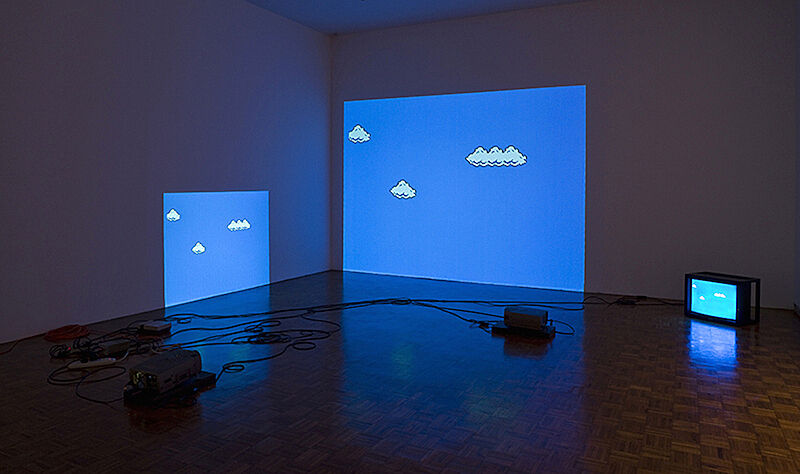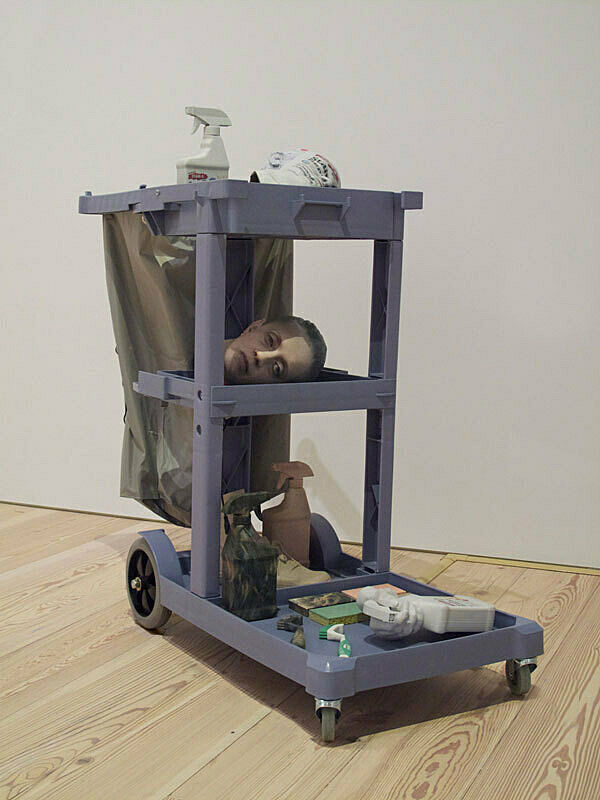Digital Transitions
Over the past fifteen years a revolution in digital technologies has fundamentally transformed the way we make and consume images. As with the proliferation of the printing press, camera, and television in earlier centuries, today the spread of the Internet, smartphones, and desktop printers has made it faster and easier to create and share pictures than ever before. Despite these changes, we live in a transitional age, navigating between screens and books, photographs and JPEGs, technologies on the brink of obsolescence or on the rise.
In Super Mario Clouds (2002), Cory Arcangel “hacked” a cartridge of Super Mario Brothers, the original 1985 version of the blockbuster Nintendo video game and removed everything except the clouds that scroll across the sky. 3D printed replicas of a female janitor’s body parts and her cleaning supplies lie on a rolling cart in Josh Kline’s Cost of Living (Aleyda), (2014), representing the plight of today’s working class Americans. Both artists challenge our expectations of technology and how we interact with it, questioning if this is the kind of world we want to live in.
a. View and discuss these works with your students.
How have these artists used technology to comment on its effect on our lives today?
Do these works fit students’ ideas of what art can be? Why or why not?
What types of digital technology do your students use?
How does it impact their lives?
What do your students consider to be cutting edge technology today?
Whether they are the latest digital devices, the fastest vehicles, or the tallest buildings, are your students in awe of technology today or are they skeptical of it? Why?
b. Ask students to think of a Twitter, Facebook, or Instagram question or prompt about technology that they would want to ask their friends, such as: What about technology thrills you? Terrifies you? What piece of technology could you not give up? Why? What technology do you wish had never been invented? Why? Cull responses and share back with the class.
Use giant chart pads (post-its) and have students write the question at the top and have the class respond to the questions as well.
Ask students to display the questions/prompts and responses they culled along with the class responses.
What did students find out from their friends and classmates?
What surprised them?
What were they not surprised about?


